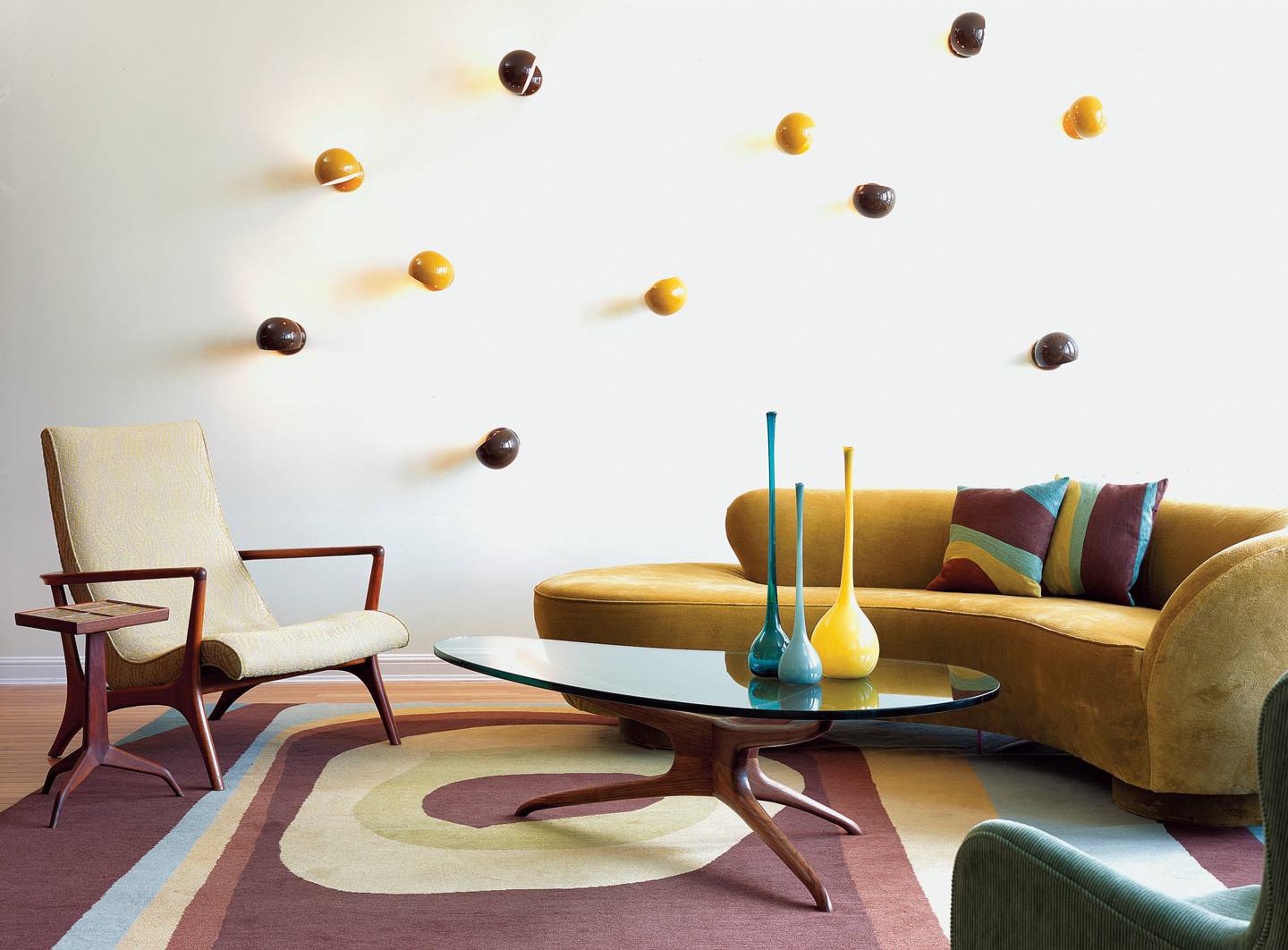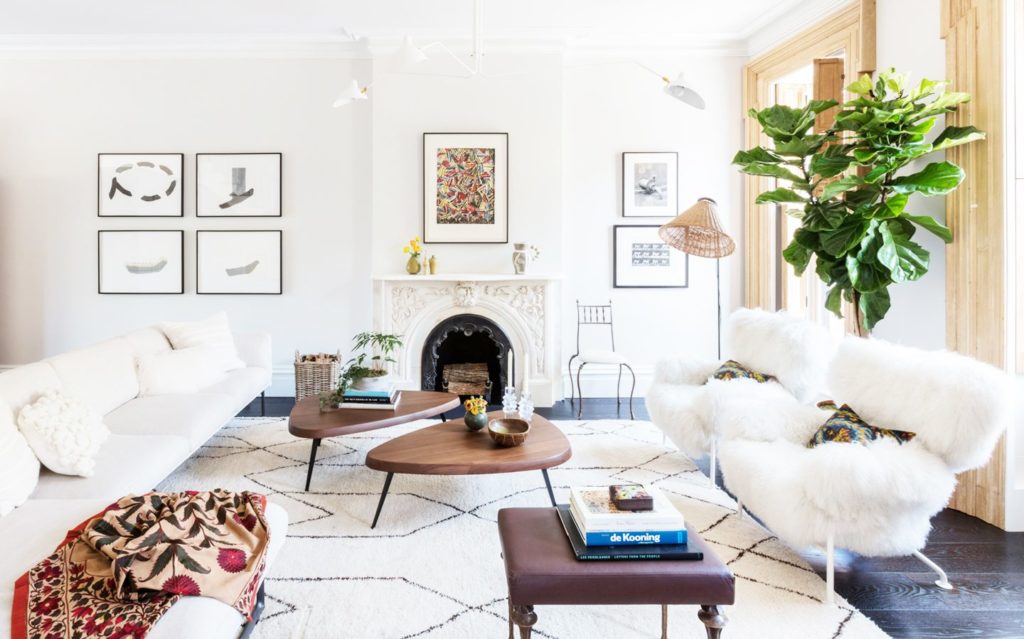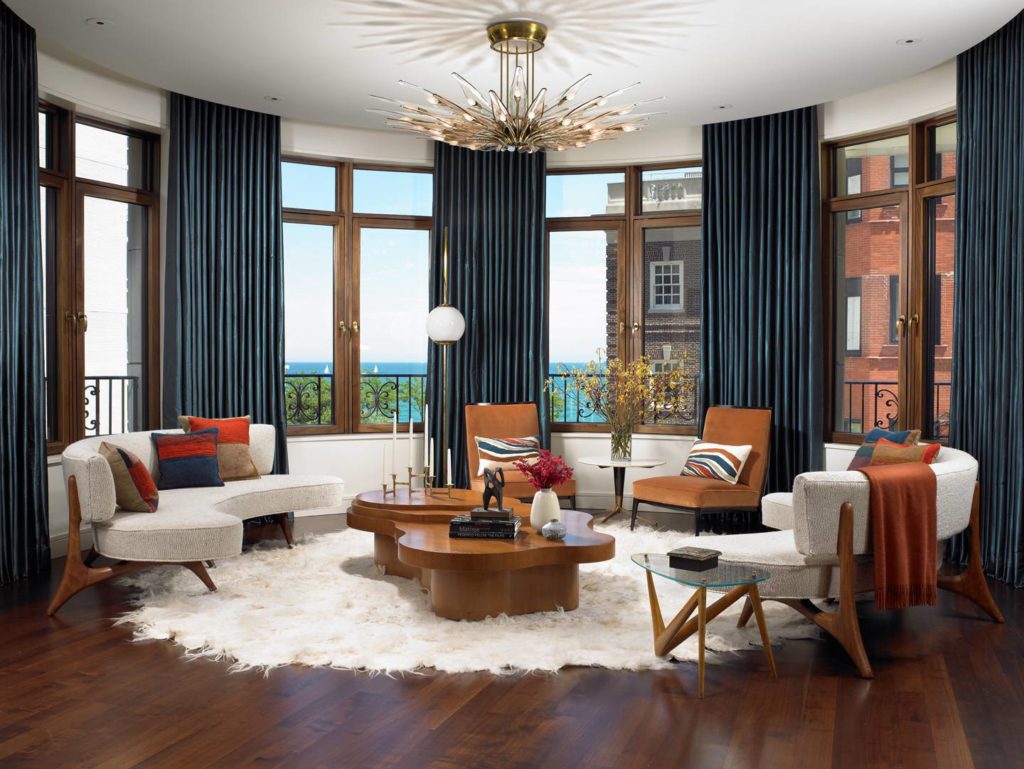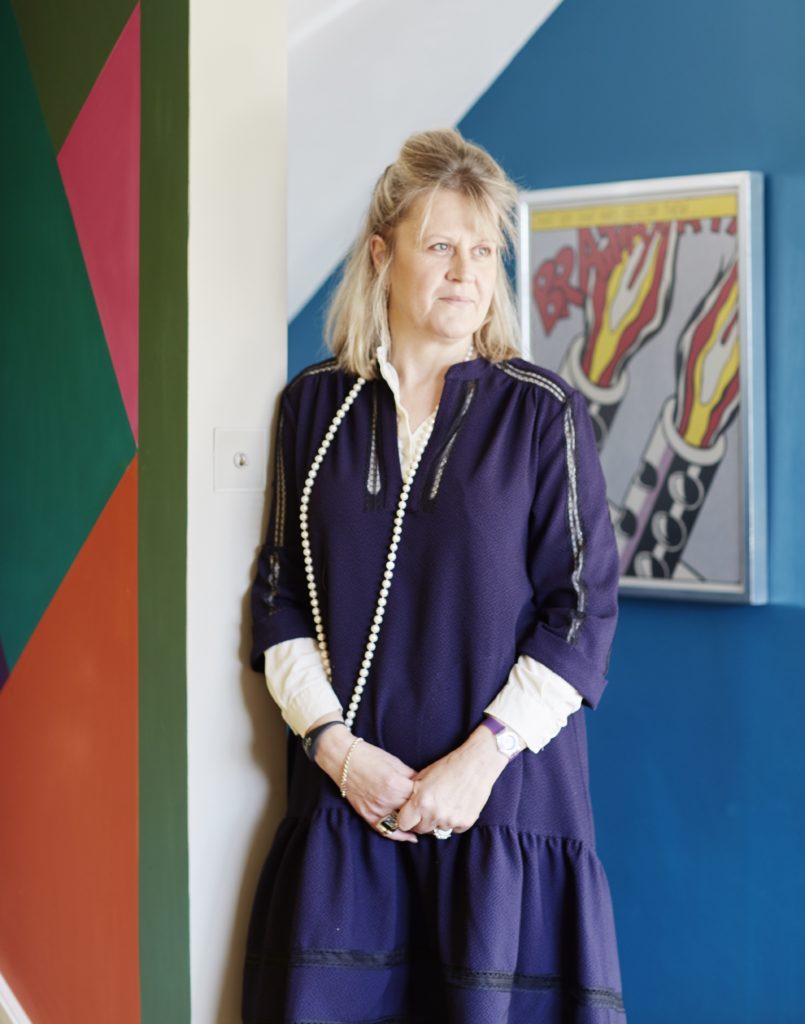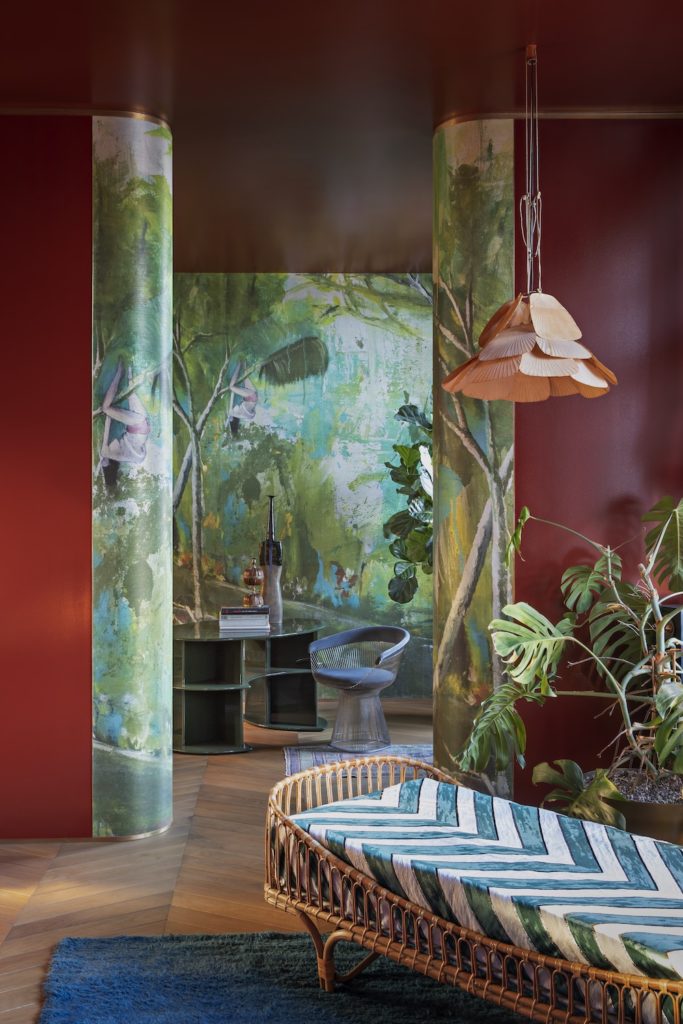History shows that where fashion leads, interiors will follow. It’s no surprise then that as seventies-style bell-bottom pants and retro prints dominate the catwalks, seventies design is also making a resurgence throughout stylish abodes worldwide. From the UK to the USA, interior designers are saying the era is back in a big way.
“When I think of the looks of the 1970s, images of serene and warm environments come to mind, like shag carpet, cosy boucle fabrics, and craft accents such as macramé, wood carvings, house plants, wall hangings and rattan furniture,” says Amy Lau of New York City-based Amy Lau Design. Known for creating welcoming, spirited and meaningful environments, Lau has channelled the trend through various projects as of late, both in her hometown of New York and internationally. “For a Brooklyn townhouse living room, we incorporated a pair of iconic lounge chairs by Franco Albini and Franca Helg, covering the chairs in cosy Mongolian lamb. For the floor, we used an antique Moroccan Beni Ourain Berber rug, adding layers to the room by using a variety of antique and vintage embroidered pillows and throws, and brought in an area of potted plants. All of this imagery conjures elements of relaxation, back to nature, and unplugging. I think this is what our society craves right now.”
While these styles are most certainly back on the scene, they might not look quite like you remember them, as this year, it’s all about inspiration rather than rigid recreation. Case in point? While a quintessential 1970s home would see stone feature walls dominating the lounge, loud prints on the floor, sharp geometric shapes and a plethora of earthy browns and oranges, now we’re seeing flashes of bold wallpaper, sculptural furniture and flesh-toned floor tiles.
“Seventies-inspired interiors are definitely making a comeback, and I think it’s because of the mood and feel associated with that era,” says Emma Deterding, founder and creative director of Kelling Designs. “The seventies were relaxed, comfortable and had a hippy-vibe, and I think this is the feeling we’re all looking to create now, especially due to the pandemic changing the way we live completely. Now that we’re coming through the other side, we all feel a lot more relaxed in terms of look and feel, and it’s shining threw in interiors and clothing alike.”
Seventies-inspired interiors are definitely making a comeback, and I think it’s because of the mood and feel associated with that era – Emma Deterding, founder of Kelling Designs
While the seventies was all about excess, 2021 is about introducing the trend in a more minimalistic way. The key to making the aesthetic work for you is opting for a timeless look that will stand the test of time, says Deterding. “I’d never recommend buying into a whole trend as it would date very quickly and be costly to continually update. Introduce retro prints and colours through accessories you can update more affordably when you want to change, such as throws, cushions, rugs and curtains. Lamps and lampshades can make a real statement too.”
Kicking off with colour, the seventies saw an explicit rejection of the stark lighting and synthetic palette of the sixties, with its vivid shades morphing into the warmer and more organic likes of avocado green, mustard yellow and, perhaps the most emblematic shade of the era, burnt orange. Injected through retro prints, these bold and playful palettes encourage creativity, where individual expression leads the way and carefree positivity rules.
“One of the best ways to introduce colour is through balanced forms and abstract shapes, which can be mirrored in wallpapers through soft geometric patterns outlined on a neutral backdrop,” says Paula Taylor, head stylist and trend specialist at Graham & Brown. “This design also pays homage to the shade of the decade, orange, bordering a warm ombre fade with a crisp teal and grey outline. The mellow, laid-back look of seventies interiors is ideal for those seeking to make space in their home to escape and reflect.”
Lau has plenty of experience here too – around six years ago, she had the rare opportunity of spending precious time going through Maya Romanoff’s archives with spectacular results. “I loved all the rich colours he used on his fabrics and wallcoverings, which led me down a very interesting path,” she says. “I was asked to co-collaborate with Maya and his team on a unique series of wallpaper and fabrics that re-interpreted what Maya was doing in the 70s with a modern spin.”

With socialising and supper clubs back on the agenda, statement wallpaper provides the perfect dramatic backdrop to stimulate conversation – if you do want to go big, take Taylor’s lead and try it on all four walls, but bold geometric designs can also make great accent pieces such as wall art prints, throws and pillows. Look to Dimorestudio for further inspiration – the minds behind one of the greatest Milan interior design studios, founders Emiliano Salci and Britt Moran boldly lead the way in bringing back 1970s style, favouring velvet and mohair lined walls, plush amber carpets, and riotous shapes, colours and patterns.
When it comes to accessories from the decade, you might have already noticed an increase in macramé wall hangings and shag rugs – “I adore hand-knotted, hand-dyed Berber rugs from Morrocan weavers. They have a lush pile, come in monochromatic tones, as well vibrantly rich colours,” says Lau of the latter – but the next big seventies item that’s slated to return is rattan and caned furniture. “Rattan and cane furniture and accessories have seen a massive resurgence in the last few years,” adds Deterding. “Adding a tactile edge and texture in the home, they can look really beautiful and allude to the seventies, boho style with ease.” Case in point – the Hans Wegner lounge chair is now a classic.
Speaking of furniture, they really knew how to relax in the seventies, with low chunky sculptural furniture facilitating some serious lounging. “Sculptural furniture has always been synonymous with seventies design, and will make a real statement in any living space,” says Deterding. “The key is making sure you use sculptural pieces in the correct place, though. Particularly in larger or open-plan rooms, they need to fill the space, and a curved sofa set away from the walls will be really impactful.” Some of the most coveted designers at that time working in sculptural forms were Arthur Espenet, Sam Maloof, Laura Anderson, and Marvin Lipofsky, to name just a few.
While millennials might get credit for the modern houseplant craze, it was baby boomers who really planted the seed, with their open-plan spaces, wood panelling, geometric accents, and earth tones making ideal counterparts to the vibrance and loose, organic feel of something like a hanging spider plant, or a trailing vine tumbling from a hanger. “Plants are a big part of the seventies aesthetics, and now, especially since the lockdown, people want to bring the outdoors in to reconnect with nature,” enthuses Deterding. “Beautiful plants are absolutely gorgeous, but dead ones not so much. Whichever way you go, make sure you look after them, and like the rest of your home, be sure to give them a good clean. Love your plants and they’ll love you.”
Both Deterding and Lau are passionate about creating spaces that are both classic and on-trend, and as homeowners are coming out of their cocoons and starting to make their living spaces feel more sociable, these nostalgic nuances are hard to beat.
Effect Magazine is brought to you by Effetto



